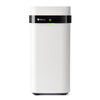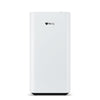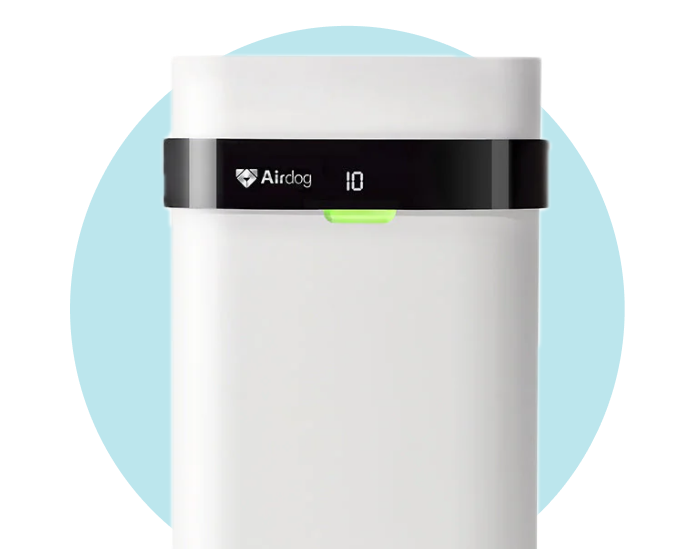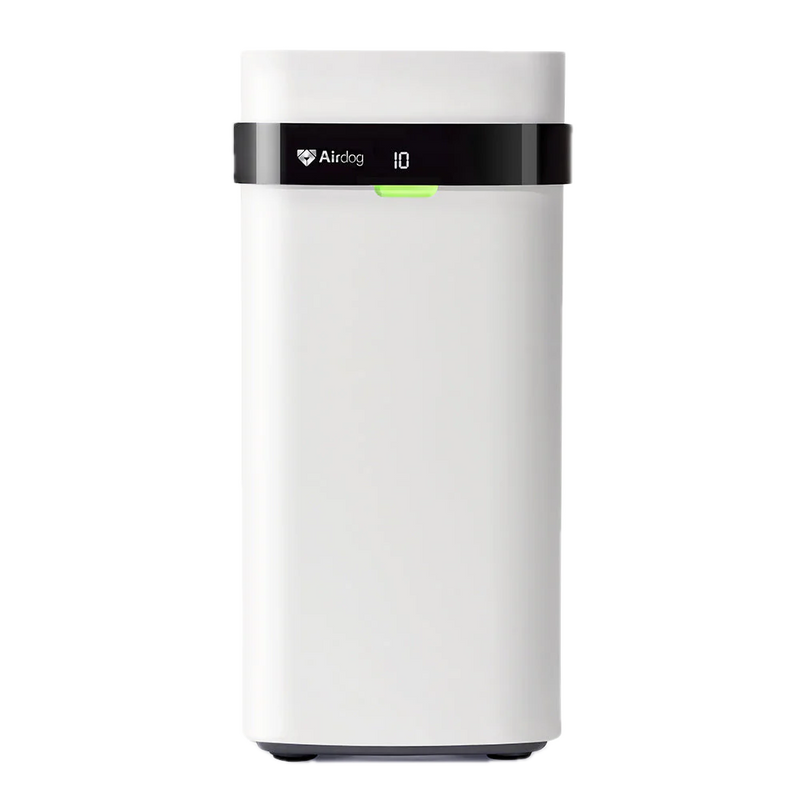Studies show that nearly 1 in 5 Americans suffer from allergies related to pets, with cat dander being a leading cause. This statistic not only emphasizes the prevalence of the issue but also highlights the need for a deeper understanding and effective management strategies. In this article, we will dive into the microscopic world of pet allergies, focusing on cat dander—its composition, why it poses such a challenge for individuals with sensitivities, and practical advice on mitigating its presence in your home.
Understanding Cat Dander: Shedding Light on the Microscopic World of Pet Allergies
Cat dander, often invisible to the naked eye, is a pervasive allergen in many homes, unbeknownst to their human occupants. This minuscule adversary comprises tiny flakes of skin shed not only by cats but also by dogs and other furry or feathered pets. Here's a closer look at the basics of cat dander:
-
Composition: Contrary to popular belief, cat dander isn't just cat hair. It's primarily made up of tiny skin particles shed from cats. These particles are incredibly light and small, allowing them to stay airborne for extended periods and infiltrate our living spaces with ease.
-
Allergic Reactions: The proteins found in cat dander can provoke allergic reactions in humans. These reactions range from mild annoyances, such as sneezing and itchy eyes, to more severe health issues, including asthma attacks and chronic respiratory conditions.
-
Challenges for Sensitivities: Individuals with allergies or sensitivities find cat dander particularly challenging due to its potency and persistence. The dander can cling to furniture, carpets, and even circulate through the home's HVAC system, making it a formidable opponent in the quest for a clean and healthy living environment.
Understanding cat dander is the first step toward mitigating its effects and improving indoor air quality for everyone in the home, especially those with pet allergies. With this foundation, we can explore the lifespan of cat dander in indoor environments and the various strategies to limit its impact on our health.
The Lifespan of Cat Dander in Indoor Environments
Cat dander's poses a significant challenge for individuals with allergies, asthma, or other respiratory sensitivities. Understanding the factors that affect the longevity of cat dander and the strategies to mitigate its presence can help create a healthier living environment.
Factors Affecting Dander Longevity
Several elements play critical roles in determining how long cat dander can remain a troublesome presence in indoor environments:
-
Carpeting: Carpets can trap and hold onto cat dander for months or even years. The dense fabric provides a perfect hiding spot for these particles, making them difficult to remove without thorough cleaning.
-
Upholstery: Similar to carpeting, upholstered furniture can also harbor cat dander. Sofas, curtains, and other fabric-covered surfaces can retain dander, continually releasing these allergens into the air.
-
Air Circulation: Poor air circulation in a home can exacerbate the problem. Without proper ventilation, dander particles can circulate through the HVAC system and spread throughout the house, settling in various nooks and crannies.
-
Humidity Levels: High humidity levels can contribute to the longevity of cat dander in indoor environments. Moist conditions prevent dander from becoming dry and airborne, allowing it to cling to surfaces for extended periods.
Efficacy of Deep Cleaning and Specialized Cleaning Services
Addressing the challenge of persistent cat dander requires more than just regular vacuuming and dusting. Deep cleaning and specialized cleaning services offer effective solutions:
-
Deep Cleaning: Engaging in deep cleaning practices can significantly reduce the amount of cat dander trapped in carpets, upholstery, and other fabrics. This process involves using steam cleaners or high-efficiency particulate absorbing (HEPA) vacuums to remove deeply embedded dander.
-
Professional Cleaning Services: Specialized cleaning services focus on pet hair and dander removal. These services utilize advanced techniques and equipment designed specifically to tackle pet allergens. According to sleepbloom.com, professional cleaners can offer comprehensive cleaning packages that include treatments for carpets, upholstery, and air ducts, ensuring that all potential dander reservoirs are addressed.
-
Eco-Friendly Cleaning Services: For those concerned about the use of chemicals, eco-friendly cleaning services provide a safe alternative. These services use biodegradable and non-toxic cleaning agents that are effective against cat dander while being safe for pets and humans alike. Their approach not only helps in dander removal but also contributes to a healthier indoor environment.
Mitigating the presence of cat dander in the home is essential for individuals with allergies or respiratory sensitivities. By understanding the factors that contribute to dander's longevity and employing effective cleaning strategies, it's possible to create a more comfortable and healthier living space for everyone, including our beloved feline friends.
Health Implications of Prolonged Exposure to Cat Dander
Cat dander, microscopic as it may be, carries a significant impact on human health, particularly for those with pre-existing conditions like allergies and asthma. Drawing from authoritative sources such as the American Society for the Prevention of Cruelty to Animals and the American College of Allergy, Asthma & Immunology, this section delves into the allergenic potential of cat dander and its effects on indoor air quality. A special focus lies on the heightened risks that dander poses for individuals with asthma, as detailed in discussions on platforms like quora.com.
The Allergenic Potential of Cat Dander
-
Composition and Spread: Cat dander is more than just cat hair; it's primarily composed of skin cells shed by cats. Due to its microscopic size, it easily becomes airborne and can spread throughout a home, infiltrating every corner.
-
Trigger for Allergic Reactions: For many, cat dander acts as a powerful allergen. It can bind to other particles in the air, making it a persistent trigger for allergic reactions. Symptoms can range from mild (sneezing, itchy eyes) to severe (chronic allergic rhinitis).
-
Impact on Indoor Air Quality: The American College of Allergy, Asthma & Immunology notes that the presence of cat dander can significantly deteriorate indoor air quality. For households with sensitive individuals, this can mean a constant battle against allergens.
Risks to Individuals with Asthma
-
Asthma Exacerbations: For those with asthma, exposure to cat dander can lead to exacerbations of their condition. The small particles can easily be inhaled, irritating the airways and potentially triggering asthma attacks.
-
Chronic Respiratory Conditions: Prolonged exposure to cat dander may not only trigger asthma attacks but can also contribute to the development or worsening of chronic respiratory conditions. The inflammation caused by allergic reactions to dander can lead to a cycle of respiratory distress.
-
Importance of Air Quality Management: Managing indoor air quality becomes crucial for asthma sufferers living with cats. Ensuring clean air through regular cleaning and possibly the use of air purifiers (without mentioning specific brands) can help mitigate the risks associated with cat dander.
Strategies for Mitigation
-
Regular Pet Grooming: By regularly grooming pets, owners can reduce the amount of dander cats shed. Brushing and bathing (when appropriate) can help keep dander to a minimum.
-
Deep Cleaning: Engaging in deep cleaning practices can remove dander from carpets, furniture, and other surfaces. Specialized cleaning services may be necessary for thorough dander removal.
-
Air Quality Solutions: Utilizing air purifiers and maintaining HVAC systems can significantly improve indoor air quality, reducing the presence of airborne dander particles. If you are considering investing in an air purifier, look no further than Airdog’s X3, X5, and X8 air purifiers, which destroy 99.9% of germs, even invisible ones such as cat dander through their patented TPA technology all within a couple seconds.
The interaction between cat dander and human health is a complex one, especially for those with sensitivities such as allergies and asthma. Understanding the nature of cat dander and taking proactive steps to manage its presence can lead to healthier environments for everyone in the household.





